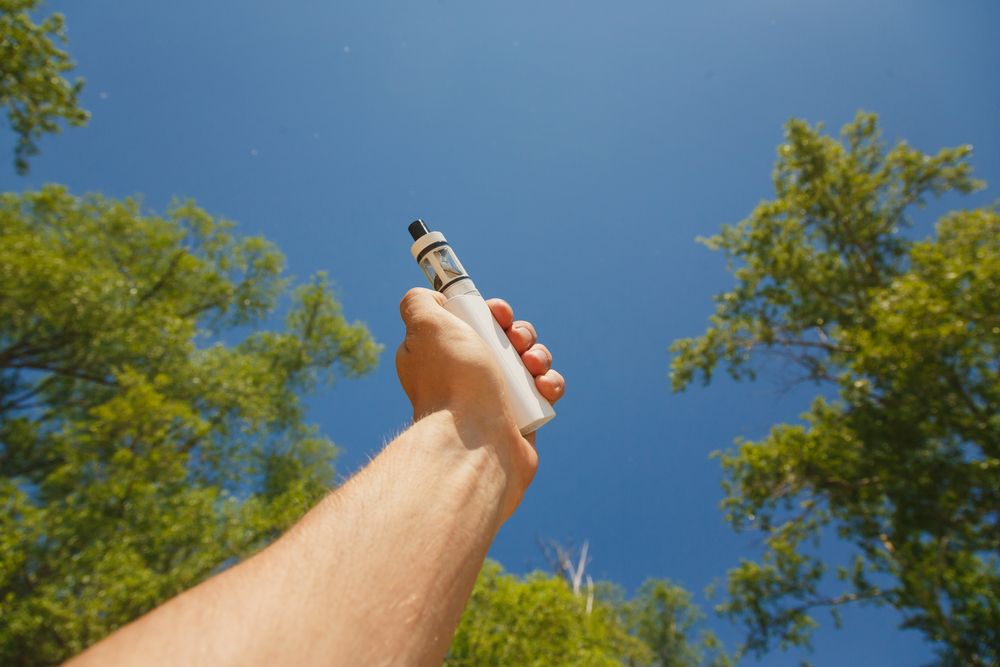← Back

How E-Liquid is Better for the Environment Than Big Tobacco Products

We often hear about the negative effects of smoking on your health, but rarely are we told about the impact that tobacco and cigarette production have on the environment. More and more people in the UK are switching to an e-cigarette to quit smoking, but this is mostly for health reasons. We think you should be aware of how e-liquid is far less harmful to the environment than big tobacco products, too.
We hope to further encourage people to consider alternatives to smoking traditional cigarettes — for more reasons than just personal health. The fact of the matter is that smoking cigarettes not only harms your body, but it promotes the large-scale cultivation of tobacco leaf, too. While tobacco can be grown organically, using techniques that promote biodiversity and healthy soil, the vast majority of tobacco leaf is grown using pesticides, chemical fertilisers and growth regulators. These are capable of creating environmental health problems, particularly in low and middle-income countries where the regulatory standards are too often careless.
But the harmful effects of tobacco production go even deeper than that. As more and more farmers seek to grow this cash crop, we must be mindful of how big tobacco has affected the environment.
 Firstly, we’d like to address some of the practices used in the mass production of tobacco leaf around the world.
While tobacco could be seen as an economically sound crop to grow, multinational tobacco companies have received criticism of the way their practices and policies enhance the environmental issues faced when growing tobacco. Local level tobacco production, especially outside of high-income countries, leads to deforestation and soil degradation. The chemical pollution, combined with deforestation, leads to ecological disruption and even the loss of ecosystem services, like biodiversity, food sources and natural resources.
Other research has shown that tobacco crops also deplete soil nutrients. By taking more nitrogen, potassium and phosphorus from the ground than other major crops, tobacco reduces the arable lifespan of the soil (unless correct soil management is practised). As well as this, the research showed that farming techniques such as “topping” and “de-suckering” plants to increase nicotine content and leaf yield further decreased the levels of nutrients in the soil.
When it comes to the processing and manufacturing of cigarettes, the harmful effects to the environment continue. Drying tobacco leaves and the subsequent processing to make cigarettes requires more harmful chemicals. While these hazardous toxins can be disposed of safely in high-income countries, the same is not always true of low-income nations, where cigarette production is more concentrated.
And if that wasn’t enough to convince you of the huge-scale damage that big tobacco inflicts upon our environment, consider the cigarettes themselves. A cigarette butt, believe it or not, isn’t actually biodegradable. The harmful chemicals they release, such as arsenic and lead, pollute soil and water as they degrade. With over six trillion cigarettes smoked a year, that’s an awful lot of cigarette butts!
Firstly, we’d like to address some of the practices used in the mass production of tobacco leaf around the world.
While tobacco could be seen as an economically sound crop to grow, multinational tobacco companies have received criticism of the way their practices and policies enhance the environmental issues faced when growing tobacco. Local level tobacco production, especially outside of high-income countries, leads to deforestation and soil degradation. The chemical pollution, combined with deforestation, leads to ecological disruption and even the loss of ecosystem services, like biodiversity, food sources and natural resources.
Other research has shown that tobacco crops also deplete soil nutrients. By taking more nitrogen, potassium and phosphorus from the ground than other major crops, tobacco reduces the arable lifespan of the soil (unless correct soil management is practised). As well as this, the research showed that farming techniques such as “topping” and “de-suckering” plants to increase nicotine content and leaf yield further decreased the levels of nutrients in the soil.
When it comes to the processing and manufacturing of cigarettes, the harmful effects to the environment continue. Drying tobacco leaves and the subsequent processing to make cigarettes requires more harmful chemicals. While these hazardous toxins can be disposed of safely in high-income countries, the same is not always true of low-income nations, where cigarette production is more concentrated.
And if that wasn’t enough to convince you of the huge-scale damage that big tobacco inflicts upon our environment, consider the cigarettes themselves. A cigarette butt, believe it or not, isn’t actually biodegradable. The harmful chemicals they release, such as arsenic and lead, pollute soil and water as they degrade. With over six trillion cigarettes smoked a year, that’s an awful lot of cigarette butts!
The Impact of Big Tobacco on The Environment
 Firstly, we’d like to address some of the practices used in the mass production of tobacco leaf around the world.
While tobacco could be seen as an economically sound crop to grow, multinational tobacco companies have received criticism of the way their practices and policies enhance the environmental issues faced when growing tobacco. Local level tobacco production, especially outside of high-income countries, leads to deforestation and soil degradation. The chemical pollution, combined with deforestation, leads to ecological disruption and even the loss of ecosystem services, like biodiversity, food sources and natural resources.
Other research has shown that tobacco crops also deplete soil nutrients. By taking more nitrogen, potassium and phosphorus from the ground than other major crops, tobacco reduces the arable lifespan of the soil (unless correct soil management is practised). As well as this, the research showed that farming techniques such as “topping” and “de-suckering” plants to increase nicotine content and leaf yield further decreased the levels of nutrients in the soil.
When it comes to the processing and manufacturing of cigarettes, the harmful effects to the environment continue. Drying tobacco leaves and the subsequent processing to make cigarettes requires more harmful chemicals. While these hazardous toxins can be disposed of safely in high-income countries, the same is not always true of low-income nations, where cigarette production is more concentrated.
And if that wasn’t enough to convince you of the huge-scale damage that big tobacco inflicts upon our environment, consider the cigarettes themselves. A cigarette butt, believe it or not, isn’t actually biodegradable. The harmful chemicals they release, such as arsenic and lead, pollute soil and water as they degrade. With over six trillion cigarettes smoked a year, that’s an awful lot of cigarette butts!
Firstly, we’d like to address some of the practices used in the mass production of tobacco leaf around the world.
While tobacco could be seen as an economically sound crop to grow, multinational tobacco companies have received criticism of the way their practices and policies enhance the environmental issues faced when growing tobacco. Local level tobacco production, especially outside of high-income countries, leads to deforestation and soil degradation. The chemical pollution, combined with deforestation, leads to ecological disruption and even the loss of ecosystem services, like biodiversity, food sources and natural resources.
Other research has shown that tobacco crops also deplete soil nutrients. By taking more nitrogen, potassium and phosphorus from the ground than other major crops, tobacco reduces the arable lifespan of the soil (unless correct soil management is practised). As well as this, the research showed that farming techniques such as “topping” and “de-suckering” plants to increase nicotine content and leaf yield further decreased the levels of nutrients in the soil.
When it comes to the processing and manufacturing of cigarettes, the harmful effects to the environment continue. Drying tobacco leaves and the subsequent processing to make cigarettes requires more harmful chemicals. While these hazardous toxins can be disposed of safely in high-income countries, the same is not always true of low-income nations, where cigarette production is more concentrated.
And if that wasn’t enough to convince you of the huge-scale damage that big tobacco inflicts upon our environment, consider the cigarettes themselves. A cigarette butt, believe it or not, isn’t actually biodegradable. The harmful chemicals they release, such as arsenic and lead, pollute soil and water as they degrade. With over six trillion cigarettes smoked a year, that’s an awful lot of cigarette butts!
























